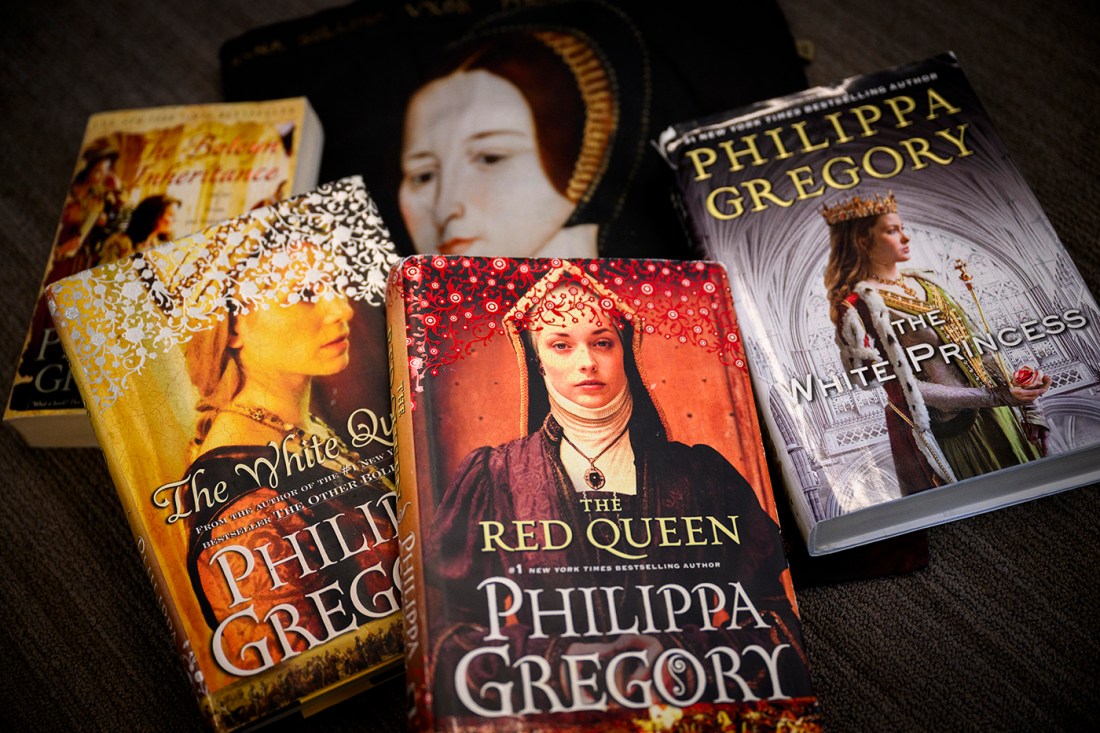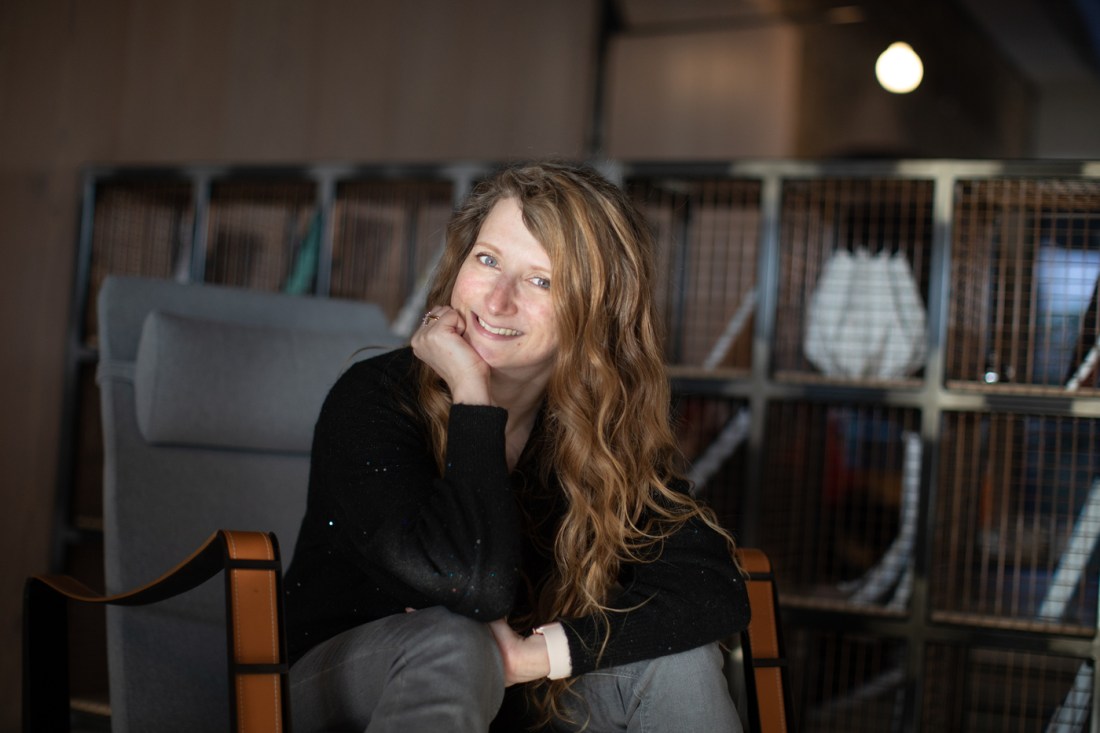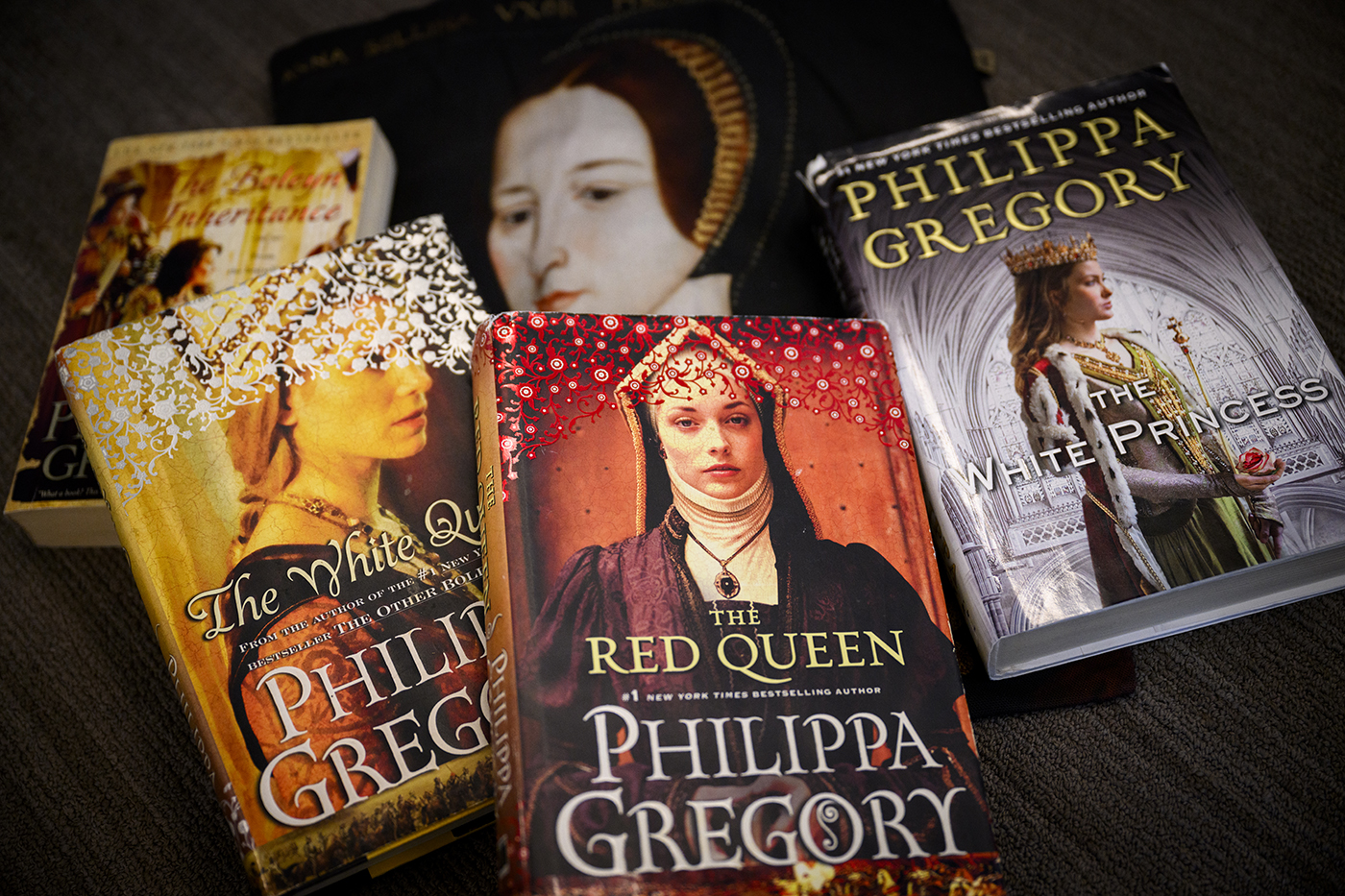Gregory has a history of taking a lot of liberties in her historical fiction, much to the chagrin of many historians.
![]()
 Philippa Gregory has been criticized in the past for the creative liberties she takes when portraying real historical figures. Photo by Matthew Modoono/Northeastern University
Philippa Gregory has been criticized in the past for the creative liberties she takes when portraying real historical figures. Photo by Matthew Modoono/Northeastern University
Many people know Anne Boleyn, the second wife of Henry VIII. Fewer know Jane Boleyn.
Jane Boleyn was the wife of Anne Boleyn’s brother, George. People think she played a role in the downfall of her sister-in-law and husband, the latter of whom was accused of incest with Anne Boleyn and executed for it. People also believe Jane Boleyn was involved in the downfall of Henry VIII’s fifth wife, Catherine Howard.
Jane Boleyn is the subject of the latest book from Philippa Gregory, “Boleyn Traitor.” The novel, coming out in October, promises to tell the story of Jane Boleyn’s attempt to survive the Tudor Court.
Gregory’s novels are historical fiction, but many historians take issue with the way she has portrayed the real-life figures she features in her work.
“I do admire Philippa Gregory,” said Estelle Paranque, a historian, author and associate professor at Northeastern University specializing in early modern history and queenship in the 16th and 17th centuries. “She’s highly successful, so she must be doing something right. … But Philippa has a history of not being historically accurate, and I think she trashes history quite badly. It’s a bit problematic. She knows how to sell, but (her work) is almost pure fiction.”
 Estelle Paranque, assistant professor in early modern history for Northeastern University in London, said Philippa Gregory’s fiction can be problematic in that she gives credence to myths about real people. by Suzanne Plunkett for Northeastern University
Estelle Paranque, assistant professor in early modern history for Northeastern University in London, said Philippa Gregory’s fiction can be problematic in that she gives credence to myths about real people. by Suzanne Plunkett for Northeastern University
While Gregory’s novels are fiction and include author’s notes about what’s true and unproven, Paranque said the books often perpetuate myths about real historical figures, some of which are problematic.
For example, in her most well-known novel, “The Other Boleyn Girl,” Gregory portrays Anne Boleyn as a “mean girl” who cheats on the king and is guilty of the adultery and incest charges against her. In reality, Paranque said, Anne Boleyn was a pious Catholic woman who wouldn’t have cheated and the charges against her were almost certainly false.
However, in using real rumors in her work, Gregory gives credence to them and paints real figures in a bad light to readers who might not know better, Paranque said. And some of these rumors are harmful.
“It is a right to write fiction,” Paranque said. “If tomorrow, I wanted to destroy Napoleon, it would be in my total right. But the thing is, she used accusations against [Anne Boleyn] that we know aren’t true. The one that really struck me is the accusation that she’s always sleeping around. That’s disrespectful.”
Other historians and historical fiction writers also take issue with “The Other Boleyn Girl.” Robin Maxwell, author of “The Secret Diary of Anne Boleyn,” said in an interview that she chose not to write a blurb promoting the novel because of the way Gregory portrayed Anne Boleyn, calling the book “an unnecessary smear job” and “a poke at a long-dead woman who couldn’t defend herself.”
“The Other Boleyn Girl” is not Gregory’s only work that historians and writers criticize. “The White Princess,” which tells the story of Henry VIII’s mother, Elizabeth of York, shows her sleeping with her uncle (building on an unproven rumor) and then being raped by her husband, Henry VII. There was no proof of the latter, and some people objected to it as “defamation.”
From this, Paranque expressed concerns that “Boleyn Traitor” will use unproven theories to further smear Jane Boleyn’s reputation.
“Jane Boleyn is a highly controversial historical woman,” Paranque said. “There’s lots of myths around her, things that are not true, that are repeated over and over again in historical fiction. … In movies and TV shows, you see Jane Boleyn being this villain.”
What is the truth about Jane Boleyn? For starters, she is probably innocent when it comes to rumors that she turned on her husband and Anne Boleyn.
“It goes to the sources and there is no proof that she ever turned against them,” Paranque said. “It would have made no sense for her to lose Anne Boleyn and George, her husband. … It was not in her best interest to have the fall of Anne Boleyn. There is no evidence that she turned against them.”
Jane Boleyn is often portrayed as turning against her husband because she had a bad relationship with him and was jealous of his relationship with his sister, but Paranque added that there is no evidence of this either.
“I think people say that because they didn’t have children,” she added. “So people always tend to think that there’s something wrong. But it doesn’t mean their relationship was bad.”
Jane Boleyn is often portrayed as mischievous and calculating, but Paranque said some of this was the result of what she needed to do to survive the fall of her family.
“She was smart enough to remain at court and to keep her head down,” Paranque said.
Jane Boleyn’s ultimate personal downfall came when she was serving Henry VIII’s fifth wife, Catherine Howard. Howard, who was only a teenager at the time, had an affair with one of the king’s attendants and Jane Boleyn apparently encouraged this and covered it up. She was ultimately executed when this was discovered.
“I think Jane Boleyn was someone with a very caring nature,” Paranque said. “When she met Catherine Howard, she realized Catherine Howard had been groomed. She had sexual relations with men that she should not have had sexual relations with. The people in her family didn’t protect her, and actually pushed her into all of this. So I think Jane Boleyn realized that. I think Jane Boleyn felt some loyalty towards Catherine because she was the cousin of Anne Boleyn. She didn’t have a bad relationship with her husband, she didn’t betray her husband and Anne Boleyn, and she showed extreme caring.”
While Gregory’s novel is not out yet, Paranque said the title alone makes her worried she’s going to continue to play into the wrong ideas.
“She’s playing with one of the biggest myths that historians are trying to debunk,” she added. “The description of it, I thought there was something a bit redeeming and that’s why I’m a bit hopeful that … she’s trying to say that Jane Boleyn is navigating a very complex and difficult situation politically. No doubt her writing is excellent, but I’m just scared that so many people think that what she writes is based on archives. It gives me a headache when you have people like Philippa Gregory always trying to play on things that are going to sell. Let’s face it: There are a lot of people who hate Anne Boleyn. They’re going to love (books that show) Mary Boleyn is the nice girl and Anne Boleyn is the bad girl. Will she do the same with Jane Boleyn?”
Arts & Entertainment
Recent Stories
:where(:not(.alignleft):not(.alignright):not(.alignfull)){max-width:600px;margin-left:auto !important;margin-right:auto !important;}.wp-container-core-group-is-layout-8fa4946a > .alignwide{max-width:1280px;}.wp-container-core-group-is-layout-8fa4946a .alignfull{max-width:none;}.wp-container-core-group-is-layout-8fa4946a > *{margin-block-start:0;margin-block-end:0;}.wp-container-core-group-is-layout-8fa4946a > * + *{margin-block-start:var(–wp–preset–spacing–40);margin-block-end:0;}.wp-container-core-group-is-layout-aaffb961 > :where(:not(.alignleft):not(.alignright):not(.alignfull)){max-width:832px;margin-left:auto !important;margin-right:auto !important;}.wp-container-core-group-is-layout-aaffb961 > .alignwide{max-width:832px;}.wp-container-core-group-is-layout-aaffb961 .alignfull{max-width:none;}.wp-container-core-post-content-is-layout-575ec271 > :where(:not(.alignleft):not(.alignright):not(.alignfull)){margin-left:auto !important;margin-right:auto !important;}.wp-container-core-post-content-is-layout-575ec271 .alignfull{max-width:none;}
]]>
